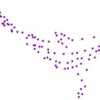Free Online Productivity Tools
i2Speak
i2Symbol
i2OCR
iTex2Img
iWeb2Print
iWeb2Shot
i2Type
iPdf2Split
iPdf2Merge
i2Bopomofo
i2Arabic
i2Style
i2Image
i2PDF
iLatex2Rtf
Sci2ools
102
click to vote
CVPR
2008
IEEE
2008
IEEE
Globally optimal bilinear programming for computer vision applications
We present a practical algorithm that provably achieves the global optimum for a class of bilinear programs commonly arising in computer vision applications. Our approach relies on constructing tight convex relaxations of the objective function and minimizing it in a branch and bound framework. A key contribution of the paper is a novel, provably convergent branching strategy that allows us to solve large-scale problems by restricting the branching dimensions to just one set of variables constituting the bilinearity. Experiments with synthetic and real data validate our claims of optimality, speed and convergence. We contrast the optimality of our solutions with those obtained by a traditional singular value decomposition approach. Among several potential applications, we discuss two: exemplar-based face reconstruction and non-rigid structure from motion. In both cases, we compute the best bilinear fit that represents a shape, observed in a single image from an arbitrary viewpoint, as...
Bilinear Programs | Branching Dimensions | Computer Vision | Convergent Branching Strategy | CVPR 2008 | Tight Convex Relaxations | Value Decomposition Approach |
Related Content
| Added | 12 Oct 2009 |
| Updated | 28 Oct 2009 |
| Type | Conference |
| Year | 2008 |
| Where | CVPR |
| Authors | Manmohan Krishna Chandraker, David J. Kriegman |
Comments (0)

